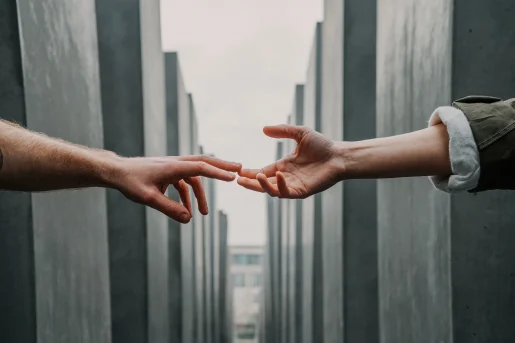Handles of empathy: Navigating the complexity of humanity in medicine and art
“Every event has two handles – one by which it can be carried, and one by which it can’t. If your brother does you wrong, don’t grab it by his wronging, because this is the handle incapable of lifting it. Instead, use the other—that he is your brother, that you were raised together, and then you will have hold of the handle that carries.” – Epictetus
At the 2023 American Society of Bioethics and Humanities (ASBH) conference in Baltimore, the concept of “trying the other handle” became a guiding principle. In the first session I attended, “Responding to Patients Who Manifest Prejudice Towards Clinicians: A Dialogue with the Audience,” Dr. Rhodes, one of the presenters, invoked Epictetus’s wisdom to explain an approach to patients whose seemingly hostile actions or language precludes their care: try the other handle.
She noted the “behavioral issues” in a patient may simply reflect the stress, frustration or fear imposed upon them by their condition. The American healthcare system is regrettably shrouded in a long-standing history of systematic intolerance, causing institutions that should be symbolic of healing to be seen instead as places of intolerance and danger. “Trying the other handle,” so to speak, and realizing the internal struggles a belligerent patient may face allows healthcare workers to look past their misgivings and provide compassionate care to those who need it most. 
This lesson of “trying the other handle” resonated throughout the conference, subtly threading its way through diverse sessions. The story of a parent of a transgender child missing a pediatrician appointment unfolded, revealing fears of potential repercussions from Child Protective Services. Similarly, a woman placing her newborn in a baby box to “do the right thing” may be silently grappling with postpartum complications. What might seem logical or compassionate in one context may, through the lens of Black bioethics, reveal inherent harm to the Black community in ways previously unidentified – or even willfully overlooked – by the majority.
After my first day at the ASBH conference, I visited the Baltimore Museum of Art, where a dimly lit room holds only an informational placard and a circular mirror bisected by a horizontal strip of light. “Frontier,” as the piece by Nekisha Durrett is called, is a portrait of Harriet Tubman through the activist’s own eyes. The often-overlooked narratives shared by individuals who lived through experiences and endured hardships we can scarcely imagine are crucial to understanding the full spectrum of human existence. Understanding someone is not limiting yourself to learning what they did and saw but getting a sense of what they felt.
Coming across the Frontier artwork after my first day at the ASBH conference visually represented the lesson I learned from Dr. Rhodes. It became a poignant reminder of how medicine, like fine art, can convey a message of tolerance and understanding that implores people to look beyond their biases and preconceptions. Returning to clinical training duties in Houston, I pay attention to both of a patient’s handles – one that is informed by their medical chart and my observations and one that is informed by the patient’s perspective, questions and concerns. In this way, I can better recognize and reconcile what they need medically and what they need as a person.
By Jade Evenstad, M.D. candidate, Baylor College of Medicine Class of 2025, and recipient of the Laurence McCullough Travel Award.



